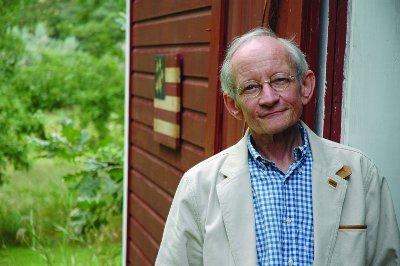- Lake County News Reports
Hulu expands the TV universe with new original series
With modern technology offering so many new ways to view and enjoy entertainment content previously confined to a television set, it’s no wonder that streaming media companies like Hulu and Netflix have become major players in the TV game.
Not that many years ago, Hulu began to offer a user-friendly model for enjoying TV series running on other networks.
As Acting Chief Executive Officer Andy Forssell told TV critics recently, Hulu “was all about last night’s TV.” The program you missed on FOX or NBC could be seen the next day.
Popular for current and vintage TV shows, Hulu now finds itself up against cable providers offering “Video on Demand,” and so Hulu started to look for opportunities to offer programs, even from other countries, that have been missing from traditional television.
Forssell observed that Hulu is “really not a network, we’re not a studio, we are a distributor at heart,” and that Hulu is all about trying to “connect people with content they love, no matter where it comes from.”
However Hulu wishes to define itself, the obvious thrust of its streaming video content is to focus on upcoming original programs, of which there are ten shows to roll out the rest of this year during the major networks’ customary fall season.
First out of the block this summer is “The Awesomes,” an animated show for adults that combines the thrills of comic book storytelling with the irreverent comedy that springs from the minds of Seth Meyers (“Saturday Night Live”) and Michael Shoemaker (“Late Night with Jimmy Fallon”).
Seth Meyers gives voice to Prock, the son of America’s greatest superhero, who wants to follow in his father’s footsteps but is utterly unqualified for the job.
With the help of the dimwitted Muscleman (Ike Barinholtz), Prock puts together a team of D-list superheroes, trying to keep federal funding for his outfit.
“The Awesomes,” though it has its moments of comic amusement, is not particularly awesome, but that’s because there’s not enough inspired lunacy to distinguish this series from the standard animated superhero fare found on any number of similar shows on cable channels.
There’s an argument to be made that there is nothing original on TV anymore. Everything is derivative, or so it often seems.
A case in point is Hulu’s “Quick Draw,” a comedic half-hour western set in 1875 that centers on a Harvard-educated sheriff and his quest to introduce the emerging science of forensics to an unruly Kansas town.
In the early days of the FOX network, a series called “The Adventures of Brisco County Jr.” starred Bruce Campbell as a Harvard-educated lawyer-turned-bounty hunter who was hired to capture an outlaw’s gang. Humor was a big part of the show.
Similarly, “Quick Draw” is campy and cheeky, with John Lehr’s Sheriff Hoyle constantly reminding the unimpressed yokels that he was educated at an elite school. He has no compunction about feeling intellectually superior, boasting that he graduated 327th in his class.
The citizens of Great Bend, Kansas include the brassy blonde owner (Allison Dunbar) of the town’s brothel, who runs an odds-making wager line on when the new sheriff will meet an untimely death.
Sheriff Hoyle also boasts of getting a B-plus in sharp shooting at Harvard, which he says is an actually an A anywhere else. Meanwhile, he’s assisted by reluctant Deputy Eli (Nick Brown) to hunt down Cole Younger and his murderous gang.
Have you ever wondered about the person inside a mascot’s uniform, whether at a high school game or in pro sports? Well, later this fall, “Behind the Mask” takes viewers on a behind-the-scenes adventure into the colorful world of sports mascots.
The series focuses on four mascots: Lebanon High School’s Rooty the Cedar Tree, UNLV’s Hey Reb, minor league hockey mascot Tux the Penguin, and NBA mascot Bango of the Milwaukee Bucks.
“Behind the Mask” tells the moving stories of these real-life Clark Kents, capturing their highs and lows, both inside the suit at games and outside the uniform at home and regular life. The tales are funny, entertaining and at times poignant.
A lot of Hulu’s original programming comes from the United Kingdom. One show produced by the BBC that looks very promising is “The Wrong Mans,” centered on two lowly office workers caught up in a deadly criminal conspiracy. By the way, it is a comedy with a twisted sensibility.
Part of the appeal of this show is that one of the main characters is played by James Corden, a truly gifted comedian. I had the great pleasure of seeing him as the leading man in the Broadway show “One Man, Two Guvnors,” arguably one of the funniest stage productions ever. Corden won the Tony Award for best actor in that show.
In “The Wrong Mans,” Mathew Baynton’s Sam discovers a ringing phone at the scene of a horrific car crash. Answering the phone turns his world upside down, as he and Phil (Corden) soon realize it’s up to them to save the day.
Sam and Phil are in the wrong place at the wrong time, with the wrong skills to get involved in sleuthing. Now you know why the show is called “The Wrong Mans,” a comedy that seems ever so right.
Several other new programs are on the horizon for Hulu. “Mother Up!” stars Eva Longoria as a disgraced former music exec who transitions from the towers of Manhattan to the carpool lane of suburbia.
I’d like to tell you more about “Mother Up!” and a slew of other new series, but Hulu has not yet provided screeners for review. Nevertheless, there may be a few good reasons to check out Hulu for more than just the next-day airing of TV programs.
Tim Riley writes film and television reviews for Lake County News.

 How to resolve AdBlock issue?
How to resolve AdBlock issue? 






